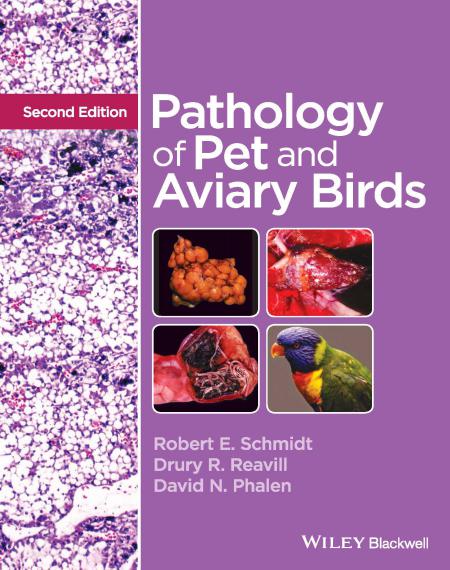Pathology of Pet and Aviary Birds, Second Edition provides a comprehensive reference to the gross and histologic features of diseases seen in pet and aviary birds, with more than 850 images depicting disease lesions.
Pathology of Pet and Aviary Birds 2nd Edition

• Provides a complete resource for identifying both common and not-so-common diseases in a wide range of avian species
• Includes more than 850 full-color images to show disease lesions
• Offers context for the interpretation of pathologic findings, promoting an understanding of the pathogenesis and epizootiology of disease
• Adds information on pigeons and chickens, pathophysiology, prognosis and trends, and globally relevant diseases
• Aids pathologists, diagnosticians, and avian veterinarians in identifying lesions in pet birds
The necropsy and related diagnostic services are an integral part of avian medicine. Both private and public collections are often large and closely housed. The death of a bird may be the first indication of a serious infectious disease, nutritional dis-ease, or other management-related problem. Avian veterinarians and bird owners depend on pathologists to make an accurate diagnosis and provide advice on the significance of their findings.
Diseases of pet and aviary birds differ significantly from those of poultry. They also differ from many of the common diseases seen in wild birds, even wild birds of the same species. Much of the literature on the disease of pet and aviary birds is widely scattered in individual articles and in proceedings that most pathologists would not routinely review. Additionally, much information has never been published in any form.
The goals of this book are to bring together in one volume a comprehensive review of the gross and histologic features of the diseases of pet and aviary birds and to provide a guide to ancillary diagnostics and a context in which to interpret the pathologic findings.While we feel this book will be a valuable reference for practitioners and students of avian medicine, helping them to understand the pathogenesis of the clinical manifestations of disease.
Password: pdflibrary.net
